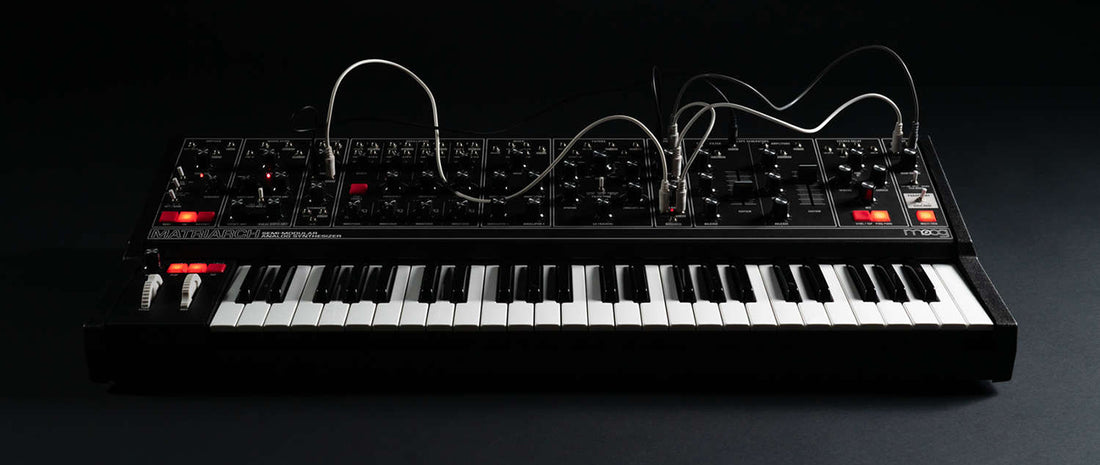

In 1963 the world's most advanced Synthesizer was the fabled "RCA II". The RCA was big enough to fill a large room, and nobody could afford one but a Rockefeller (the RCA II was built on a huge grant from the Rockefeller foundation). Operating the 'machine' required input from a pre-programed data feed that resembles tickertape paper. Output went direct to a disk lathe for proofing. Very few people could operate the behemoth RCA Synthesizer. In fact, it generated more rumors than it did music. Tales of the RCA II's ability to replace an entire orchestra full of musicians and other flights of fancy helped the RCA's fame circle the globe, till one day in 1964.
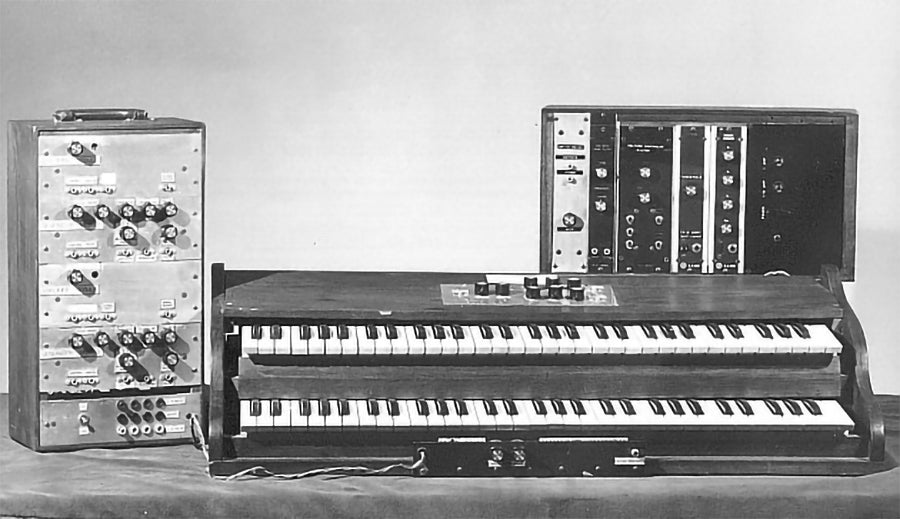
The first Moog electronic synthesizer. Unit A: two-manual keyboard. Unit B: dual tone generator and amplifier. Unit C: a power supply, envelope generator, filter and white noise generator.
Bob Moog unveils his prototype "Voltage Controlled Electronic Music Modules"
Before it's even 'switched on' the differences between the RCA II and the Moog are painfully obvious. Bob Moog's prototype fits on a large desktop, and it cost under $16,000 to develop the first working prototype (at least a couple of zeros less than the RCA II). Another instantly obvious detail is the intended user. Moog's creation is a tool for musicians, not engineers. The Moog system is built to play in real time, using an interface most musicians are already accustomed to. An abbreviated Piano style keyboard was chosen for its familiarity and universal appeal.
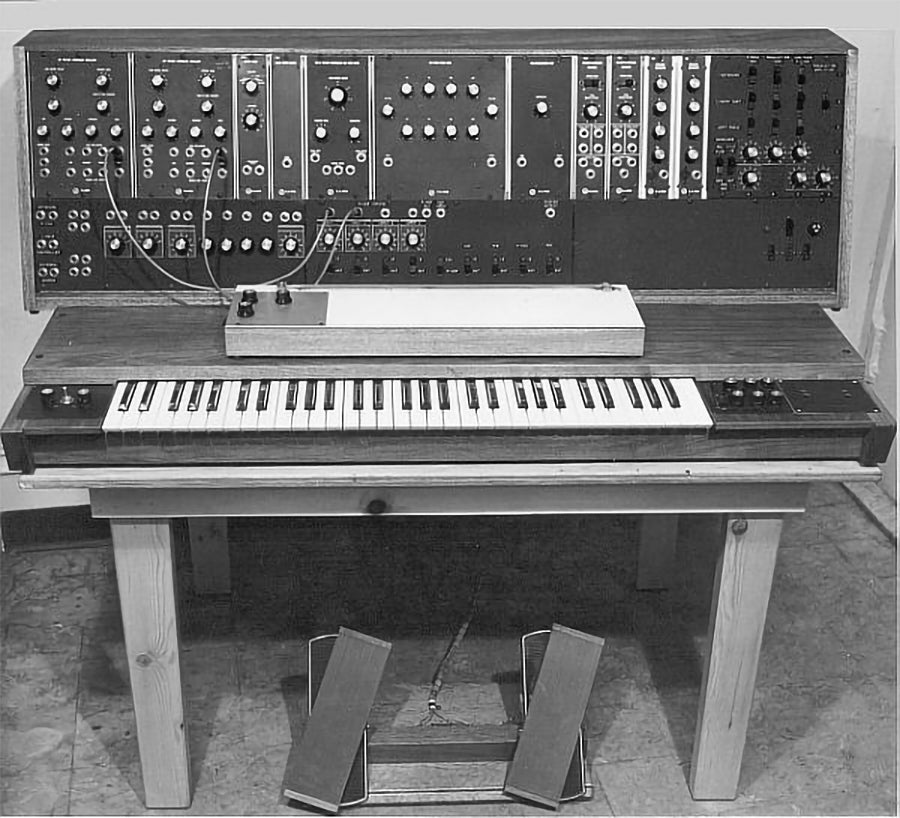
1965 Modular System with Prototype Ribbon Controller and Foot Pedals: Keyboard Controller - 1, Linear Controller - 1, Footpedal Controller - 2
A new approach to "Synthesizing Music"
Everything about Moog's Music Synthesizer is built on a new and original design. Transistors, especially chosen for voltage sensitivity are used to create each module. Each module is responsible for a separate part of the instrument's tonal character that can be arranged in endless variations. The Voltage Controlled Oscillators (VCO) are used to convert voltage into pitch and basic tonal shape. Voltage Controlled Filters (VCF) refine and define the timbre of each note. The Filter module is where most of the tonal personality is generated. Within the Filter module is Moog's amazing 'ladder type' Low Pass Filter. The ladder style filter is a huge part of Moog's fat, gritty knockout punch signature sound. The VCA (Voltage Controlled Amplifier) regulates the volume of each note but can be set to control the level of anything the player assigns it to. The Low Frequency Oscillator (LFO) is an ingenious use of a pitch creating Oscillator (VCO) that operates below the human hearing range. Moog cleverly uses it as a kind of 'auto pilot controller' for sequencing, vibrato, or virtually any parameter desired.
Another of Moog's most important contributions is the Envelope Generator (aka Contour control). The EG is responsible for creating the selected "shape" or ADSR (Attack, Decay, Sustain, and Release) for each note. 'ADSR' helps the player choose the natural character of brass, winds, reeds, strings, voice, or anything imaginable (including 'backward' sounds). Without the EG, every one of the millions of sounds an artist can coax out of the Moog Synthesizer would have the same contour as a cheap electric "cord" Organ. No matter what the player is searching for, sounds without contour just don't sound musical, natural, or real (and not in a "good" way).
-
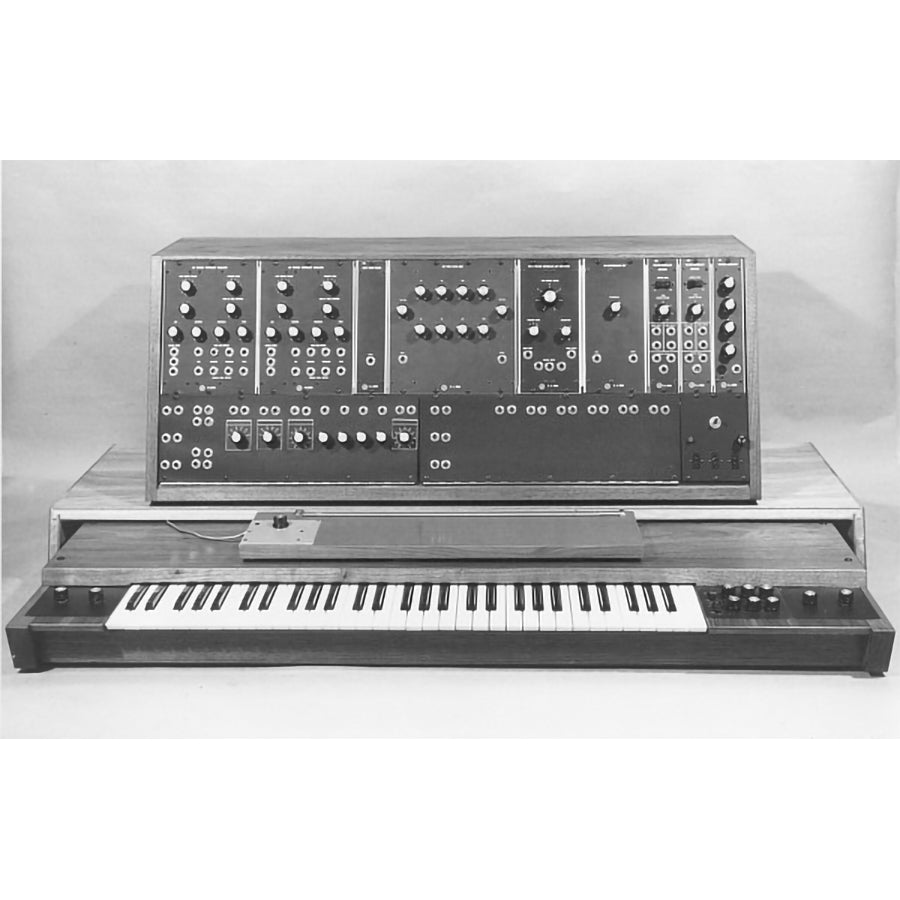
1967 Modular System 'Synthesizer I'
-
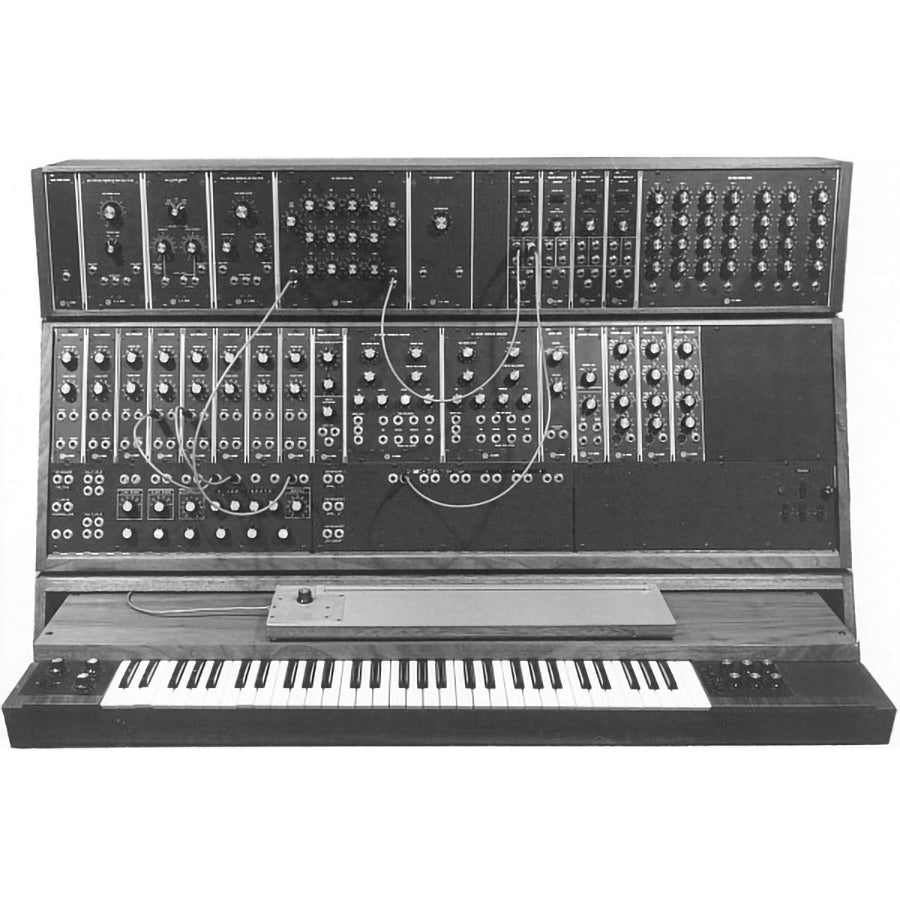
1967 Modular System 'Synthesizer III'
-
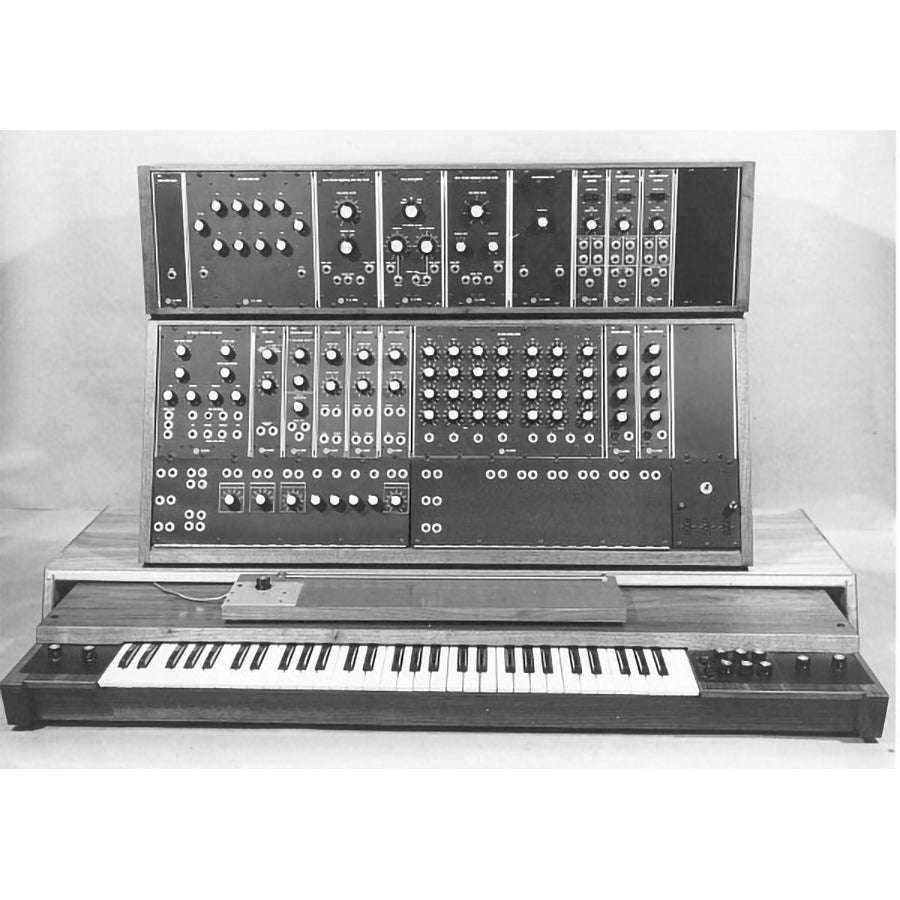
1967 Modular System 'Synthesizer II'
-
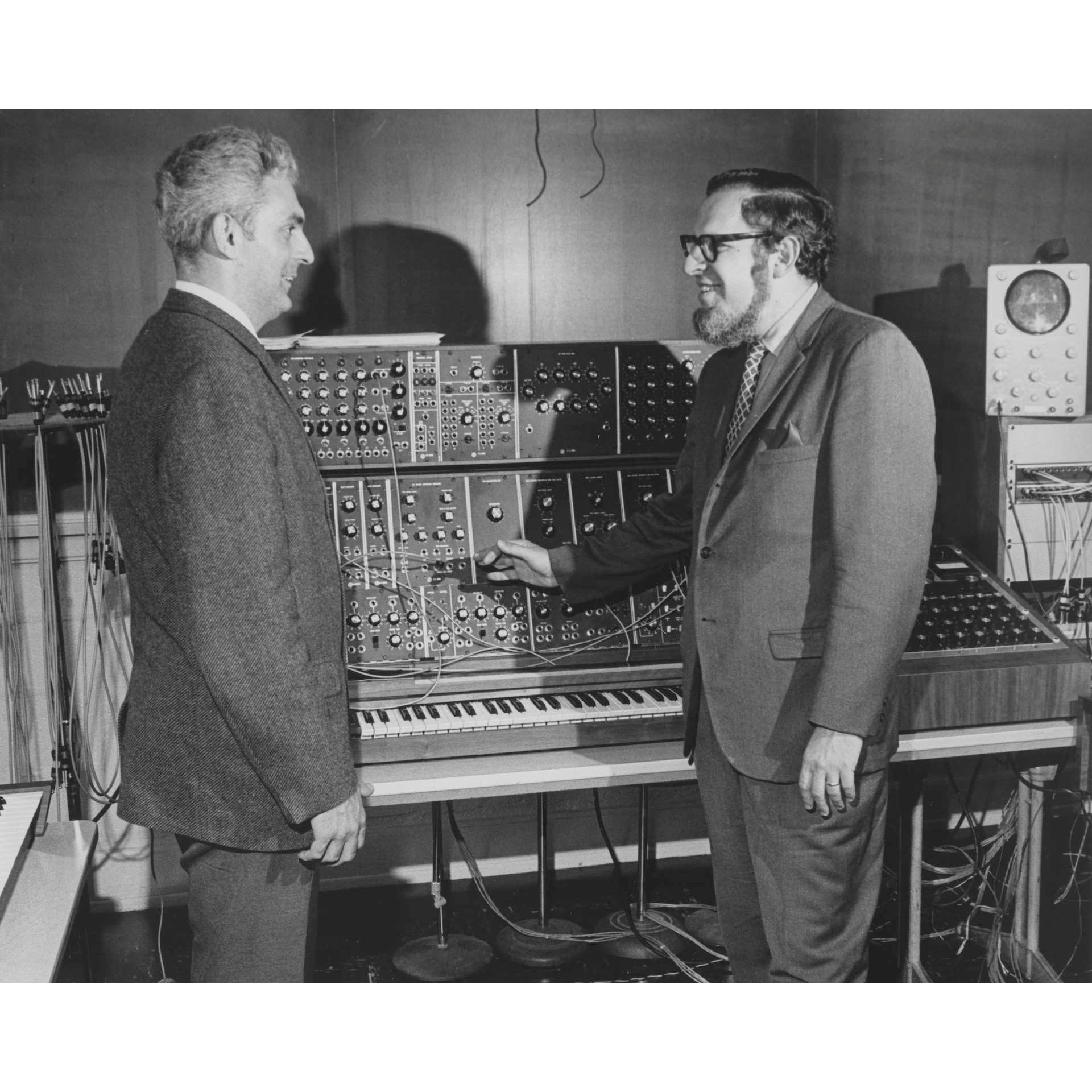
On October 12, 1964, Bob Moog unveiled the first modular voltage-controlled synthesizer, an instrument that forever changed the course of modern music.
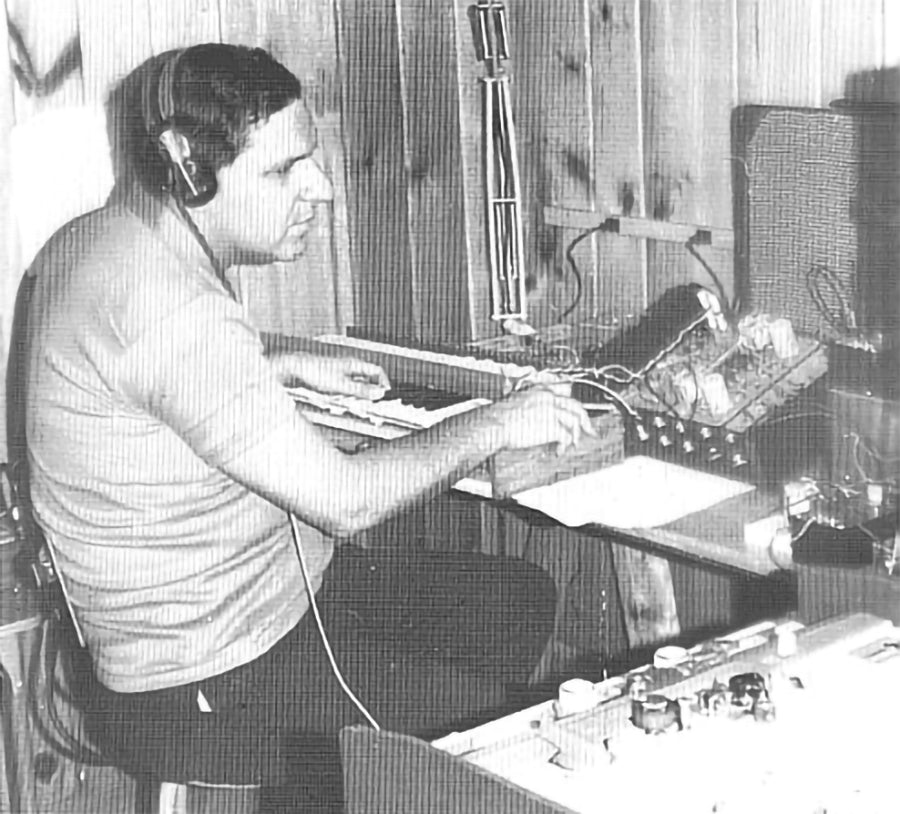
Herbert A. Deutsch working on the Development of the Moog Synthesizer
Operating the Series 1 Modular Moog
Moog's modular banks of controls are connected by a patch bay full of cables that resemble an antique telephone operator's switchboard. There are no presets, 'prefab' sounds, or even an owner's manual, to help the Musician prepare and play the Moog Synthesizer. Hand connecting patch bays, and turning potentiometers to fine tune Oscillators, Filters, Envelope controllers and Amplitude modules forces the player to learn how each part of Moog's Synthesizer creates and effects sounds. The learning curve is steep, but Bob Moog encouraged musicians to explore to the absolute fullest. Moog even felt the Piano keyboard was a necessary "compromise" that prevented complete artistic freedom. In effort to step beyond the piano keyboard's limitations, touch sensitive 'ribbon' slides, potentiometers, and pitch bending wheels are often seen built into the earliest Moog keyboards/controllers.
The Moog Model D 'Minimoog.' The most important electronic instrument ever made?
In 1970, Moog created the world's first user friendly, internally hardwired Synth. The Minimoog (aka Model D) eliminates the need for an external patch bay, routing the most commonly used connections internally. What the Model D sacrificed in flexibility, is ironically gained by its ease of use. For comparison's sake, the (1970-1973) Moog modular IIIP (Portable) has three giant modules with a very intimidating number of potentiometers and patch bays. The 3.5 octave Minimoog can be carried under one arm, boasting a neat, easy to operate control panel.
Influential Moog instruments
Moog continued to lead the way with instruments like the Micromoog, Polymoog (polyphonic capability), Minitmoog (with velocity sensitive keys), the foot-controlled Taurus I&II, Memory Moog (100 presets, and 6 note polyphonic capability), and many, many more. Moog never stopped making and improving the Theremin (from the original mail order model, through big Briar, Claravox, and Theremini "trainer.") Moog continued making a 2nd generation of modular synths (The model 10, 12, 15, 35 and the astounding model 55, until 1981). Bob Moog's last synthesizer design is the 2002 Minimoog Voyager. Ironically, Moog's last design is a return to the 1970 Minimoog model D. The model that pushed the now billion-dollar electronic music category into top gear. The Minimoog-Voyager features modern sound storing capabilities, a touch screen controller, Midi, a new stereo version of Moog's famous ladder style filter, and a 6-pin connector that enables Moog's original modular connectivity. In a way, it's a full circle of Moog's past, present, and future.
-
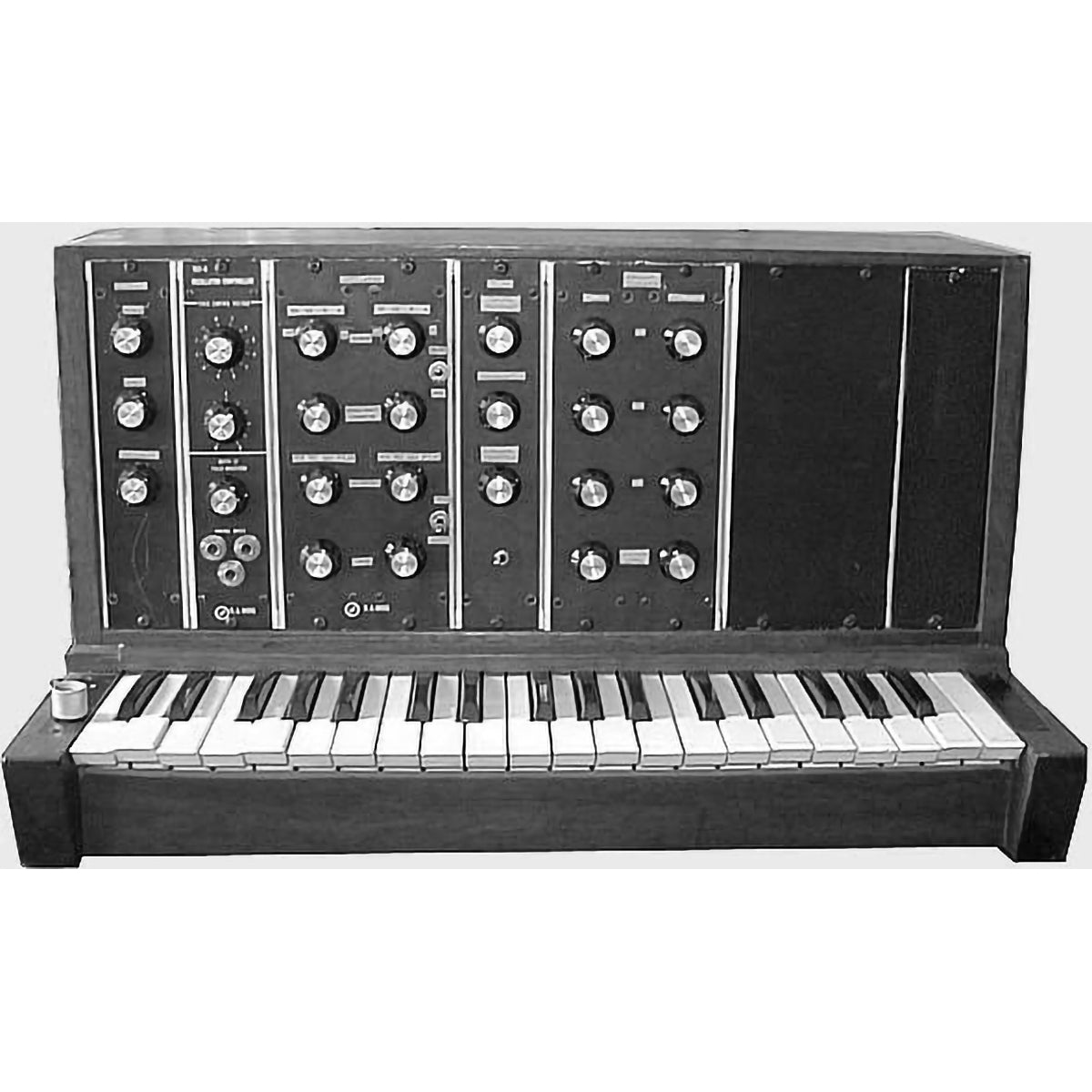
1970 MINIMOOG 'Model A'
-
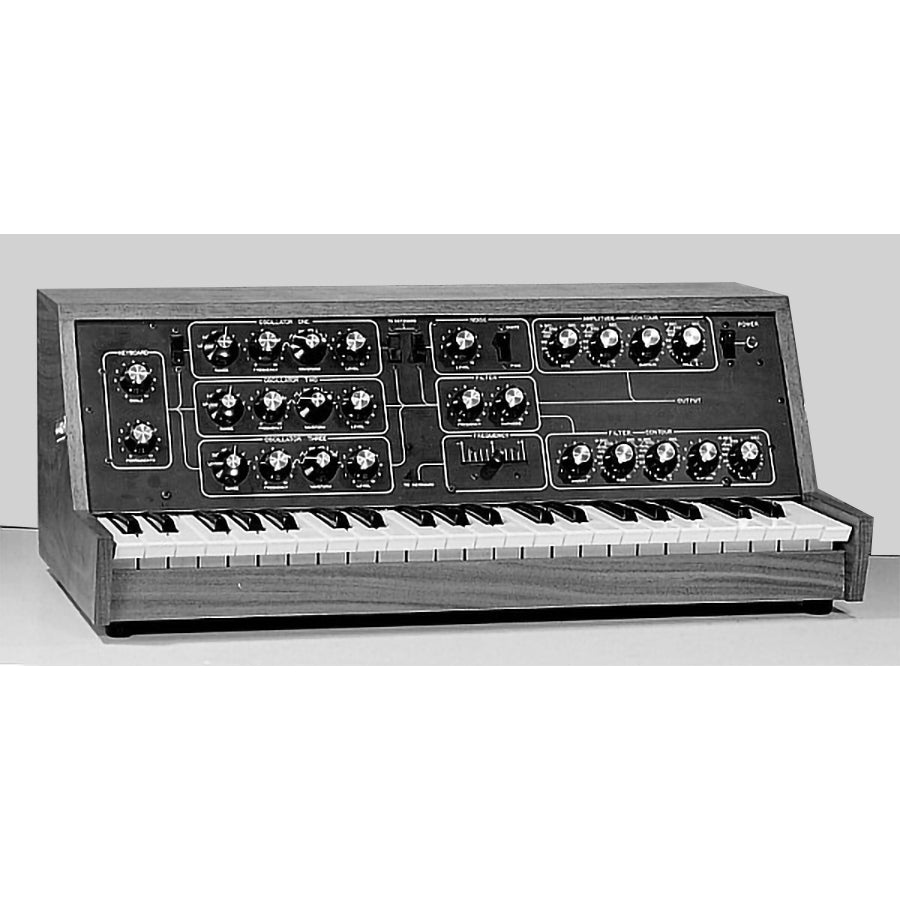
1970 MINIMOOG 'Model B'
-
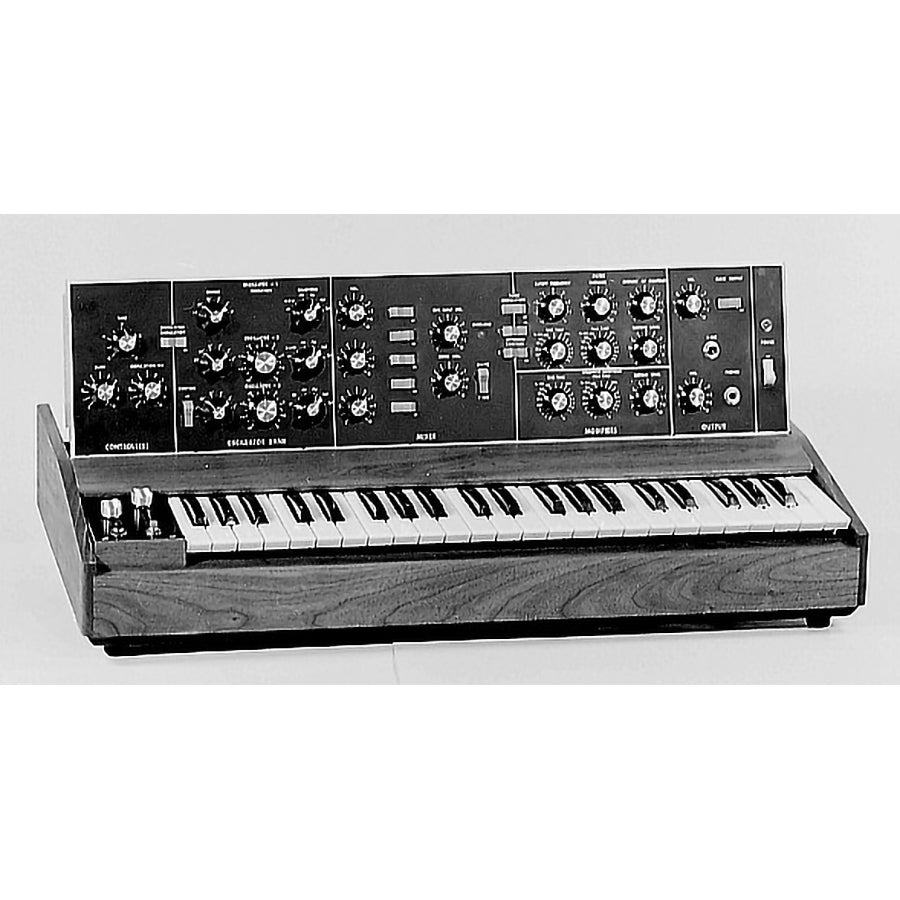
1970 MINIMOOG 'Model C'
-
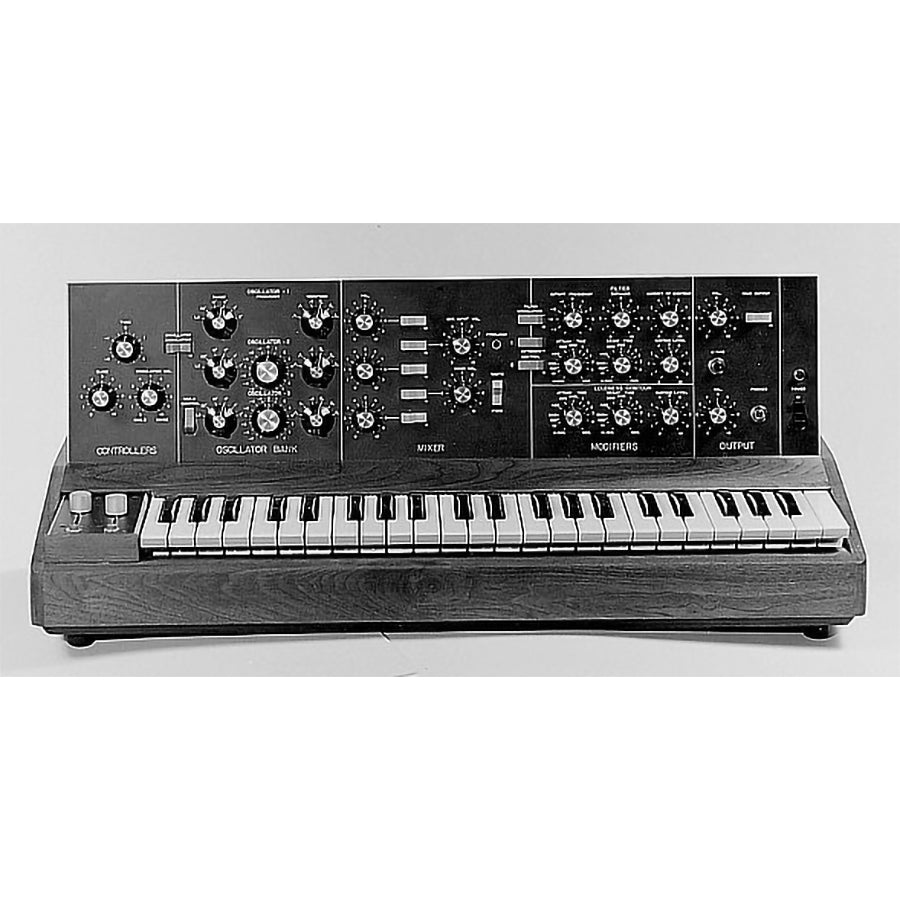
1970 MINIMOOG 'Model D'
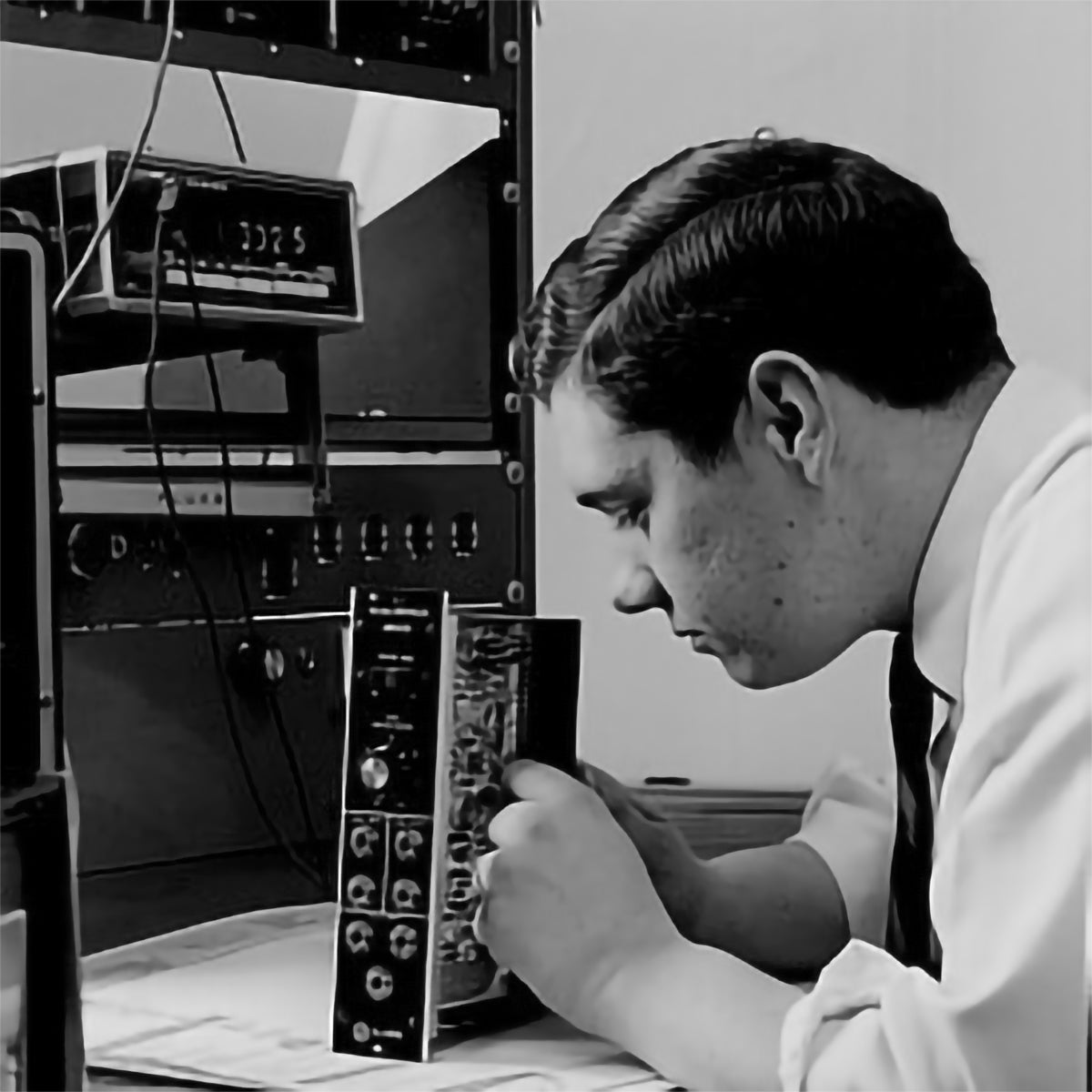
Testing in June, 1970
The Moog legacy
Throughout his life, Bob Moog maintained his self-image of a hobbyist that makes tools for musicians. Before the Moog modular Synthesizer, Electronic music as we know it today simply didn't exist. Although Digital Synths have largely taken the place of Analog designs, none of it would be possible without Moog's inventions. Had Moog decided to patent his VCO, VCF, VCA, LFO, E.G's, or Pitch Wheel, he'd have become one of the richest men on earth, with a lock on everything it takes to build a modern Synth. Instead, the only patent filed by Moog is for the ladder style Low pass filter. In effect, Moog protected his signature sound only. Although Bob Moog is a self-proclaimed "awful businessman," the man is a card-carrying Physicist, and nobody's fool. Leaving most of his inventions without patent protection was Moog's way of seeding the future of electronic music.
Today's Moog
If Moog had his way, Moog instruments would not be considered keyboards, or synthesizers. but simply an instrument called 'Moog'." The Moog is not a Keyboard, nor is it a Synthesizer- in the way most people think of them. Most of today's most popular Moog's share the convenience of modern presets, polyphonic capability, and some feature hybrid, or complete modularity. In recent years, demand for fully modular Moog instruments has grown. The Return of the fully modular Model 10, and semi-modular Grandmother and Matriarch are among the most popular instruments Moog currently makes. Proof of a healthy appetite to slow down, and learn how to create completely new sounds. The modular Moog is best used as Bob Moog intended-Whatever you want it to be.
-
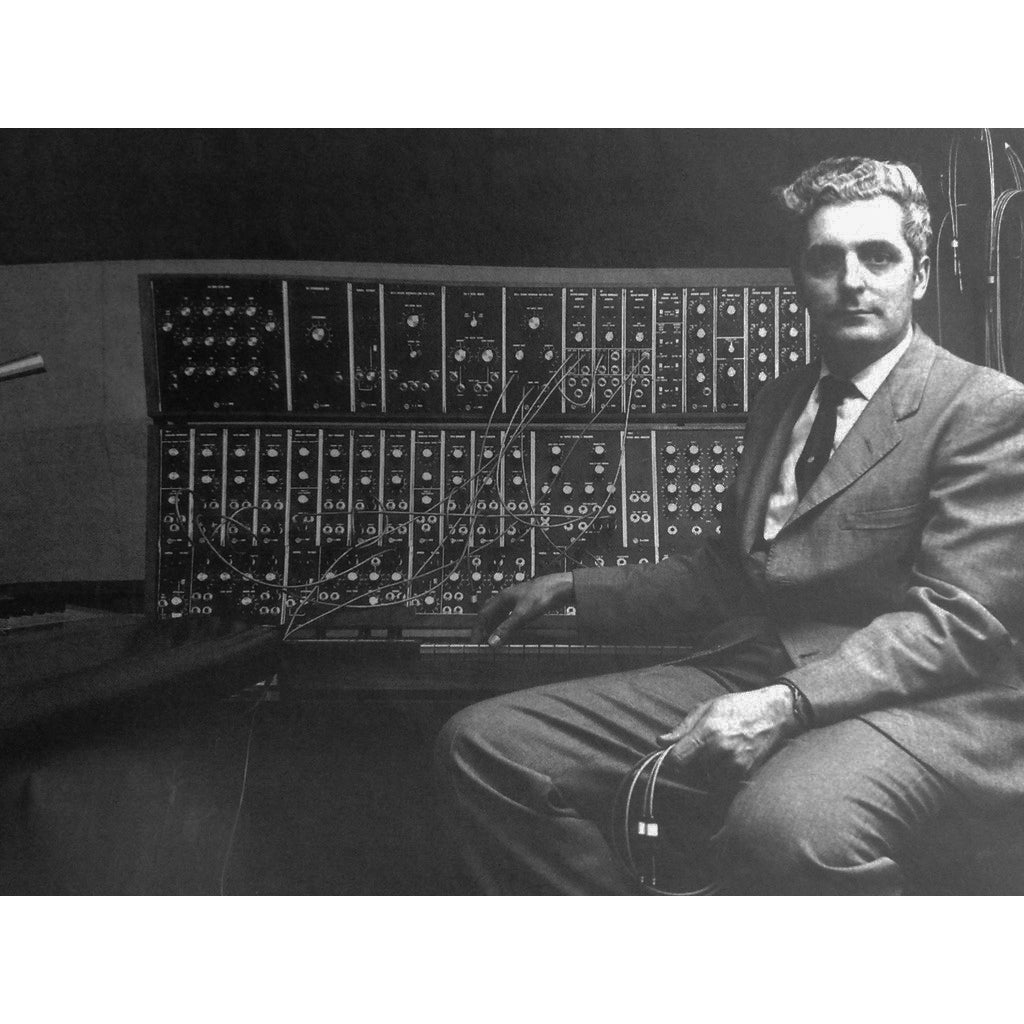
Bob Moog
-
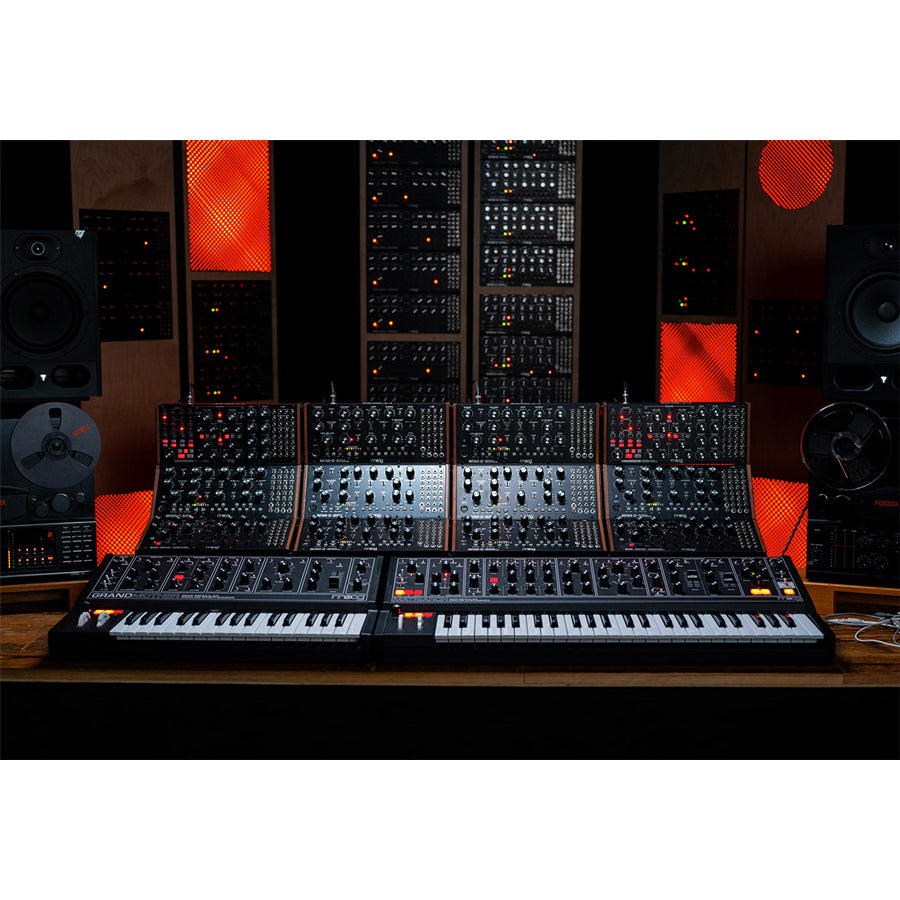
Modern Moog Synthesizers
-

The Impact of the Moog Theremin: A Brief History
The Theremin was invented around 1920 by Soviet Russian Scientist Leon Theremin. His creation was probably the first musical instrument that had no “acoustic” ancestors and definitely the first musical...
The Impact of the Moog Theremin: A Brief History
The Theremin was invented around 1920 by Soviet Russian Scientist Leon Theremin. His creation was probably the first musical instrument that had no “acoustic” ancestors and definitely the first musical...
-
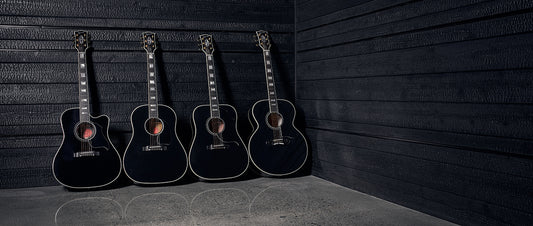
Choosing the Right Gibson Acoustic
Choosing a Gibson was your first great move. Every Gibson acoustic guitar made today, is a direct descendant of the groundbreaking designs of the 30’s through the 60’s. Gibson has...
Choosing the Right Gibson Acoustic
Choosing a Gibson was your first great move. Every Gibson acoustic guitar made today, is a direct descendant of the groundbreaking designs of the 30’s through the 60’s. Gibson has...
-
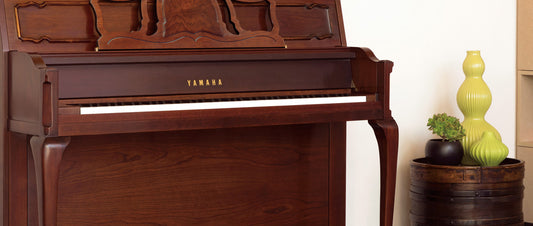
Yamaha Musical Instruments: Empowering Music Cr...
Torakusu Yamaha the businessman, engineer, traditional and progressive minded genius made himself and the world a promise. He will bring the power and means to make music Traditional value and craftsmanship working...
Yamaha Musical Instruments: Empowering Music Cr...
Torakusu Yamaha the businessman, engineer, traditional and progressive minded genius made himself and the world a promise. He will bring the power and means to make music Traditional value and craftsmanship working...













